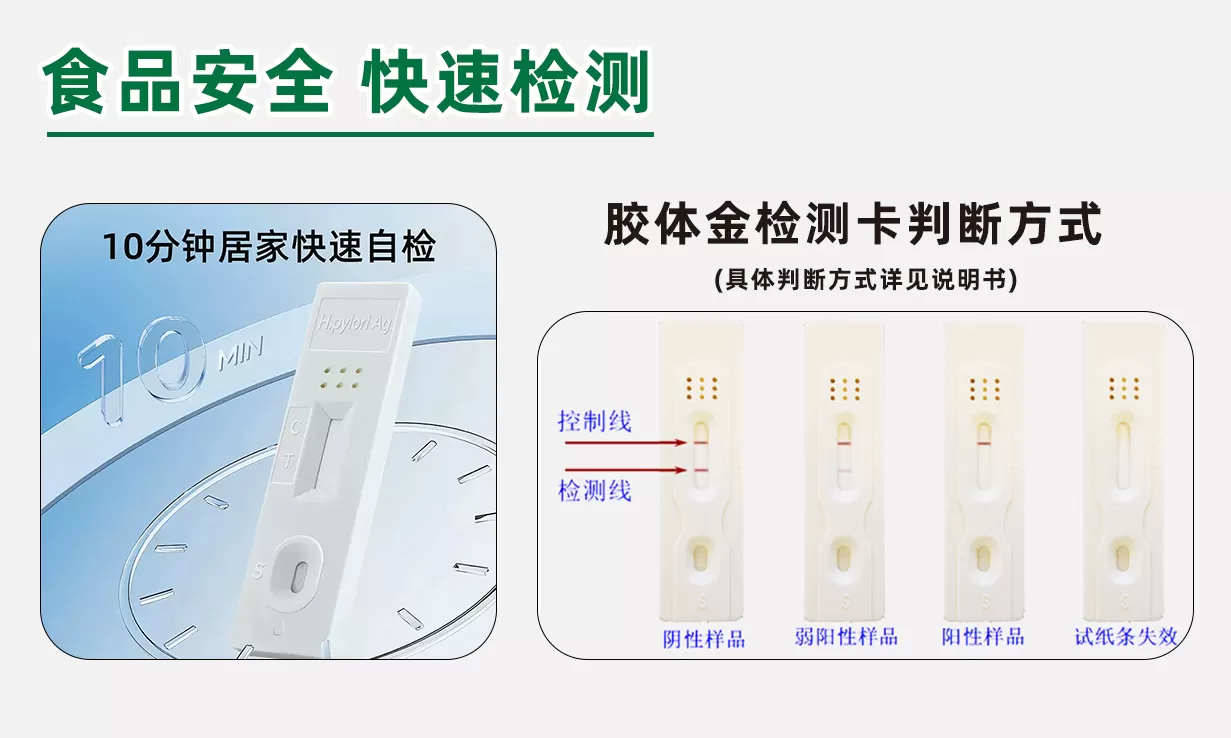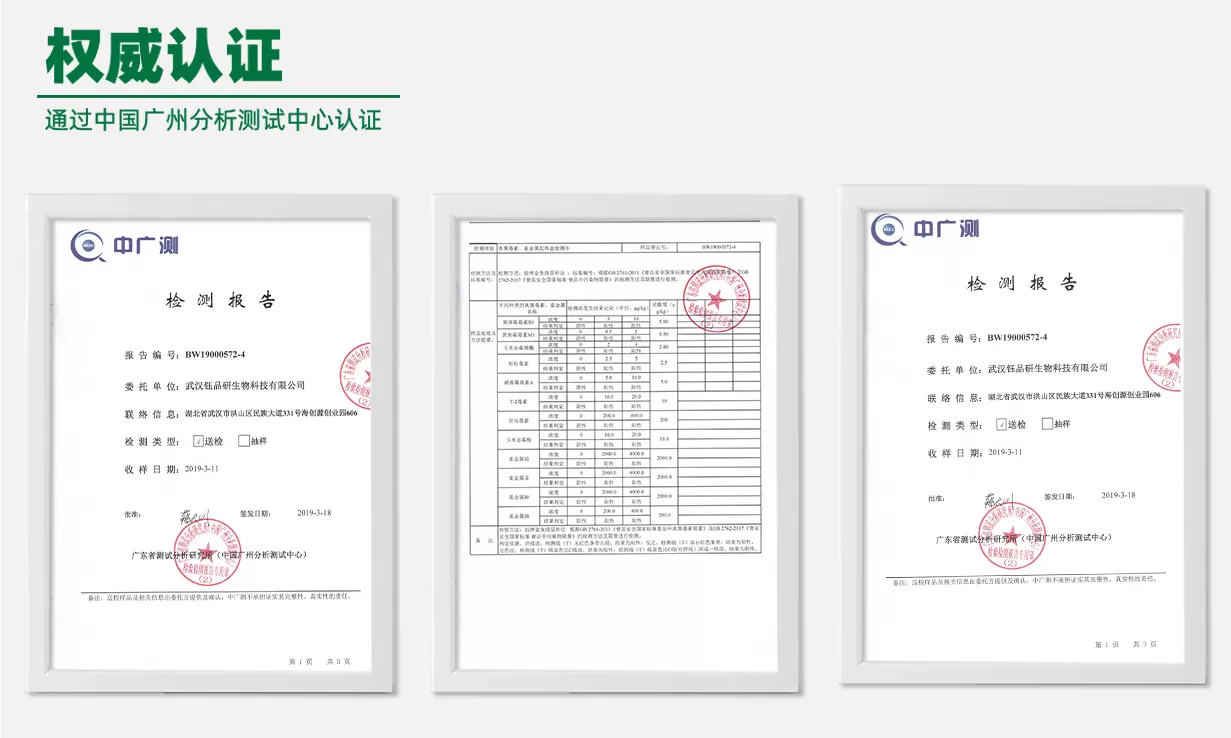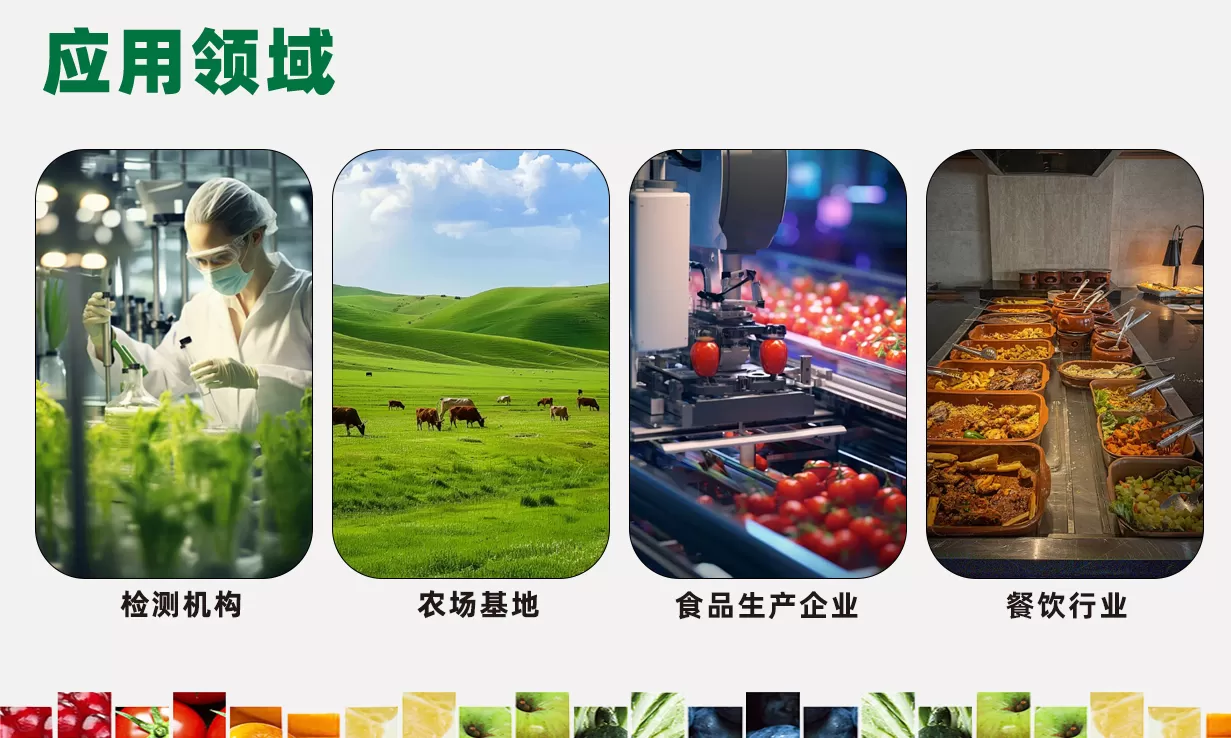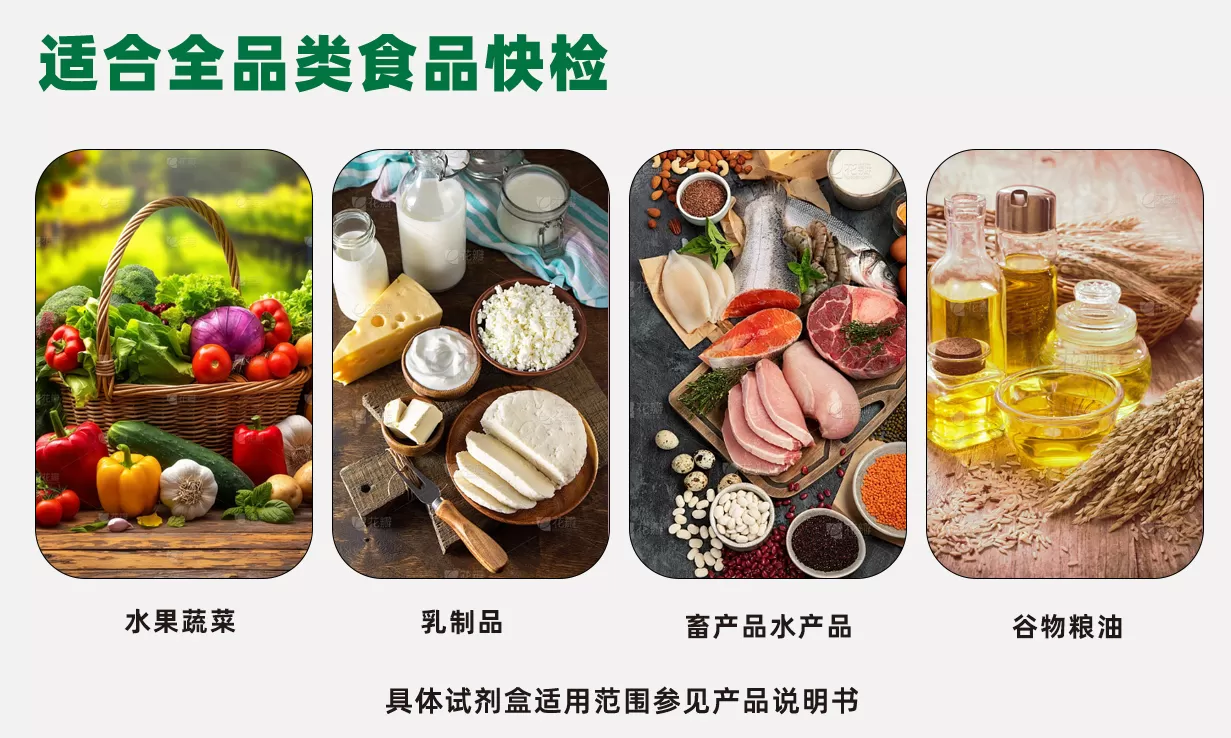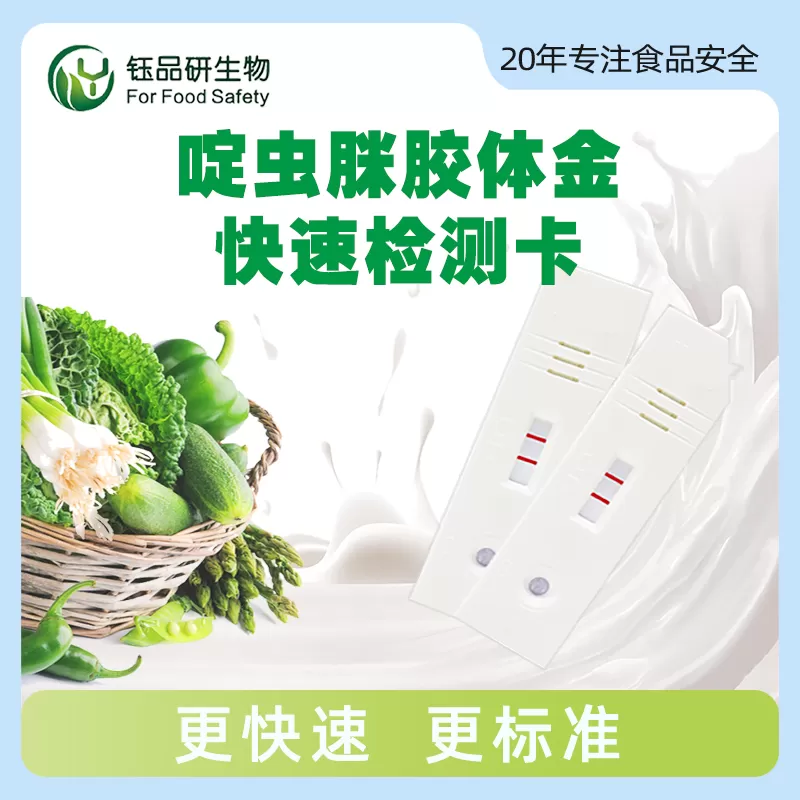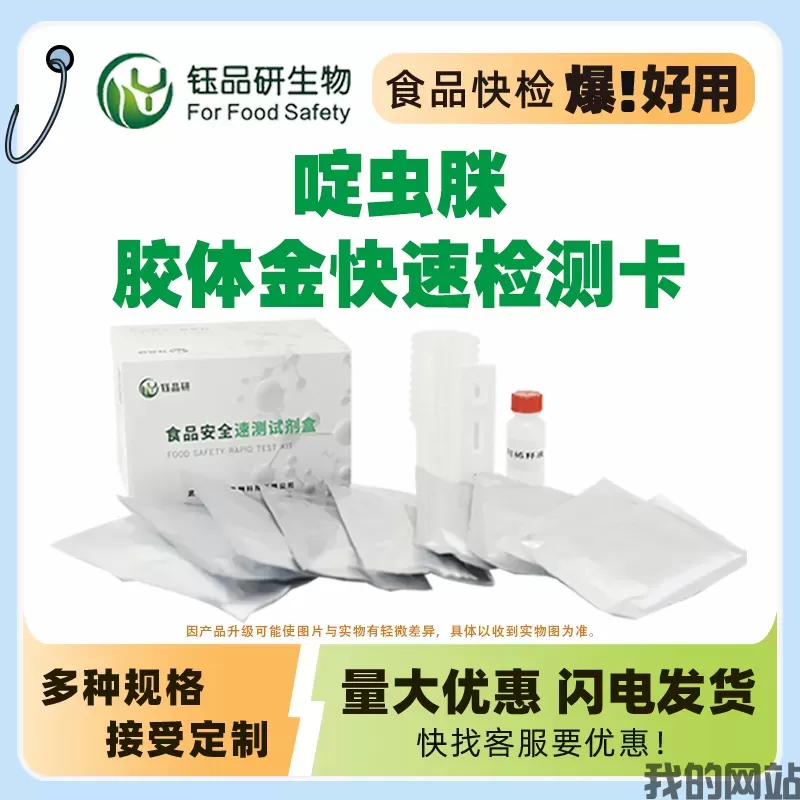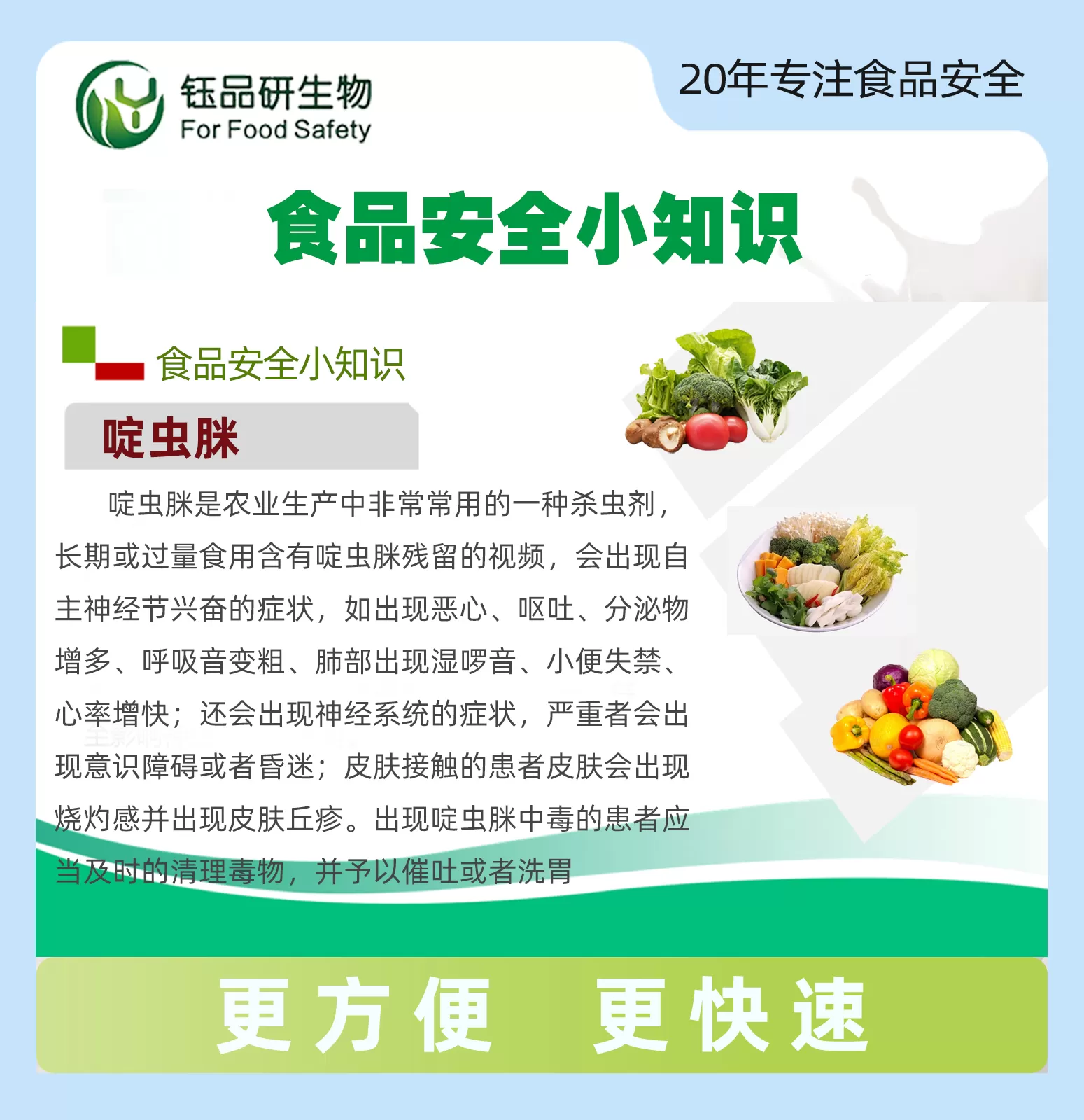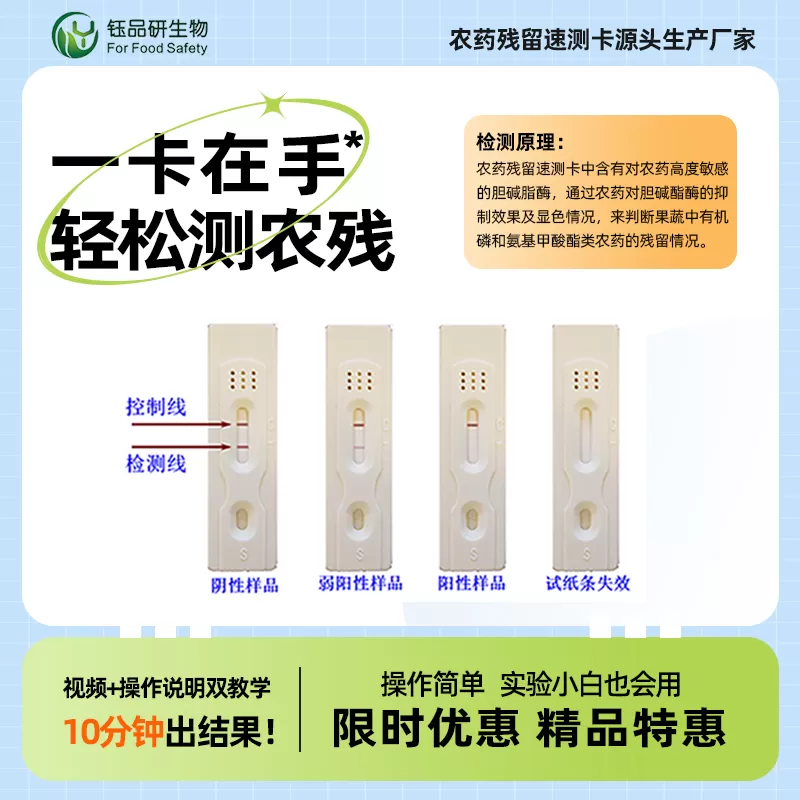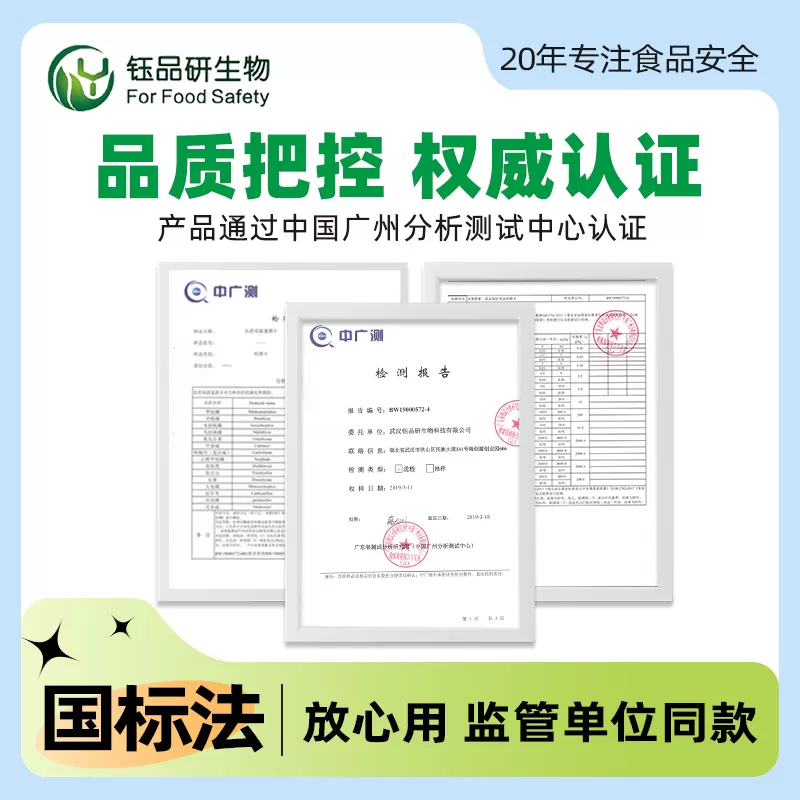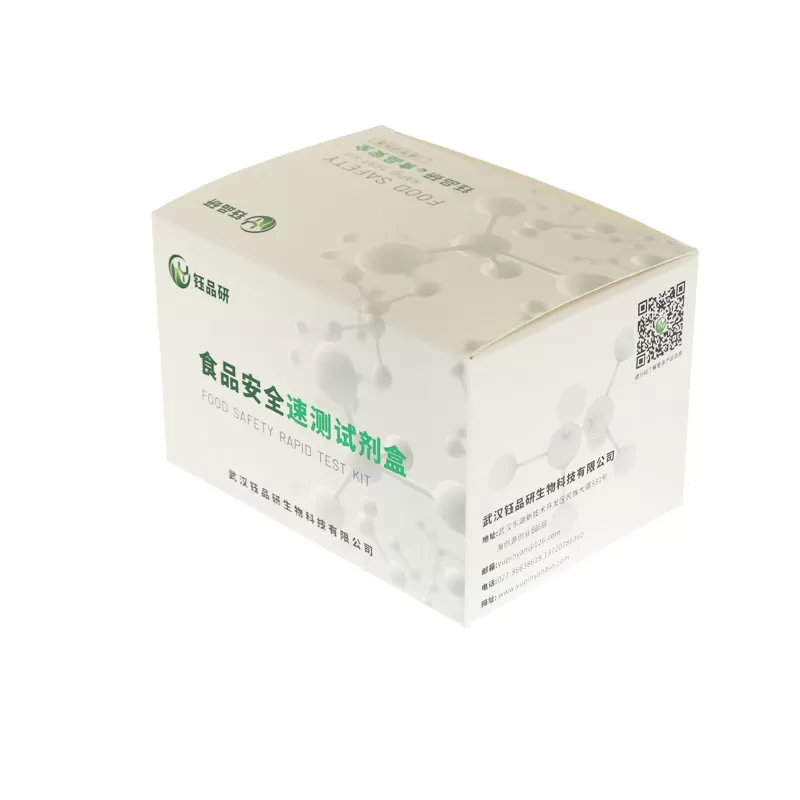Pyrimidine Colloidal Gold Rapid Detection Card Instruction Manual
1 Principle and Use
This product is made of the principle of competitive inhibition of colloidal gold immunochromatography for the detection of pyrimidine pesticide residues in vegetables and fruits. After the sample solution is dropped into the sample hole of the detection card, the pyrimidine in the sample solution binds to the gold standard antibody, thereby preventing the gold standard antibody from binding to the pyrimidine conjugate on the cellulose membrane. The detection result is judged by the color depth of the C and T lines.
2 technical specifications, detection limit: 0.1 mg/kg (ppm)
3 You need to bring your own tools
electronic balance (0.1-100 g), scissors, forceps, disposable cups, vortex mixer (optional), pipette (0.1-1 mL), timer.
4 sample pre-treatment
4 Before detection, the sample needs to be restored to room temperature (20-30 ° C), take an appropriate amount of sample, cut into 1 cm square fragments;
4 Weigh 2 grams of shredded sample in a 15 mL centrifuge tube, add 3 mL dilution, manually shake extraction for 2 minutes, let stand for 1 minute, to obtain the sample solution; 117277984000.3 Take 1 1.5 mL centrifuge tube, dilute the sample solution with the diluent in different proportions according to the following table, and the diluted solution is the liquid to be tested;
Different sample dilution ratios and detection limits
Sample name
Dilution ratio
(sample solution: dilution)
National standard limited GB2763-2021
onions, broccoli
without dilution
(1:0)
0 mg/kg
Solanaceous vegetables (tomatoes, eggplants, sweet Pepper, okra, etc.), zucchini, zucchini, winter squash, bayberry, dragon fruit, watermelon, melon
1 00 µL: 100 µL
(1:1)
0 0.2 mg/kg
Kale, broccoli, bitter gourd, broad beans, radish, asparagus, orange, orange, lemon, kumquat, grape, papaya
100 µL: 400 µL
(1:4)
0 mg/kg
Sample name
Dilution ratio
(sample solution: dilution)
National standard limited GB2763-2021
ordinary cabbage, Chinese cabbage, tomato, eggplant, bell pepper, okra, cucumber, pumpkin, pod pea, stem lettuce 117277981100 400µL: 900 µL
(1:9) 117277984 (1:14)
1 mg/kg
Leeks, green garlic, pomelo fruits, tropical and subtropical fruits (except bayberry, banana, papaya, dragon fruit)
5 0 µL: 950 µL
(1:19)
2 mg/kg
Onions, kale, lettuce for leaves, lettuce for stems Leaves
30 µL: 1470 µL (1:49)
5 mg/kg
5 sample testing
5.1 Tear the aluminum foil packaging bag of the test card, remove the test card and dropper, and place it on a flat and clean countertop.
5.2 Absorb 120 µL (about 4 drops) of the above liquid to be tested in the sample hole (S) of the test card with a pipette or dropper;
5.3 Start timing after adding the sample, leave it at room temperature for 8-10 minutes to judge the result, and the result interpretation at other times is invalid.
6 result judgment
Negative (-): The color development of the T-line is darker than that of the C-line or there is no significant difference from that of the C-line, indicating that there is no substance to be tested in the sample or its concentration is below the detection limit.
Positive (+): The color development of the T-line is significantly weaker than that of the C-line or the T-line does not develop color, indicating that the concentration of the substance to be tested in the sample is equal to or higher than the detection limit.
Invalid: No C-line appears, indicating that the operation process is incorrect or the test card has failed. In this case, the instructions should be read carefully again and re-tested with a new test card.
7 Note
(1) Products that have expired or the aluminum foil bag is
(2) When the test card is taken out from the refrigerator, it should be restored to room temperature and opened. The opened test card should be used as soon as possible to avoid failure after moisture.
(3) Do not touch the white film surface in the center of the test card.
(4) The liquid extraction dropper cannot be mixed to avoid cross-contamination.
(5) Please keep the reagent in a place that is not easy for children to contact. Do not eat the equipped reagent.
(6) If you need to directly test the standard product, please prepare it with the dilution provided in the kit.
8 Storage and shelf life
(1) Storage conditions: 4-30 ° C Store in the dark, do not freeze.
(2) Shelf life: 1 year, see the outer packaging for the production date.
9 kit composition
specifications
composition
10 times/box
20 times/box
test card (containing dropper, desiccant)
10 parts
20 parts
acetamidine dilution
1 bottles
2 bottles
15 mL centrifuge tube (recyclable)
1
2
1 mL centrifuge tube
10
20
manual
1
1

